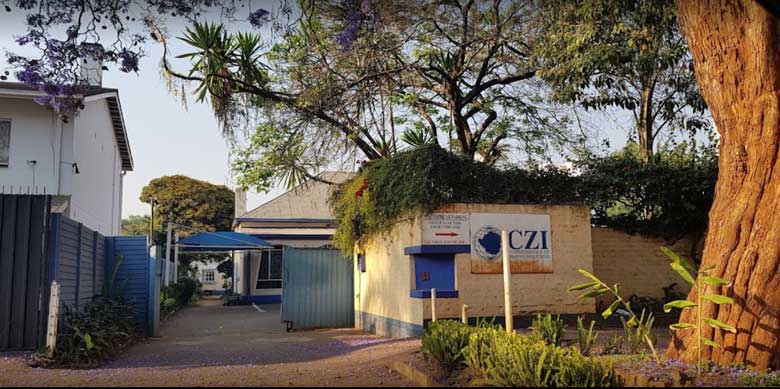
In the search for financial resilience, especially amidst the economic volatility experienced in Zimbabwe and Africa, investors are increasingly turning to passive income strategies.
One standout approach is investing in dividend stocks from the US and Canada, renowned for their consistent dividend payments and growth, offering a pathway to financial stability through Dividend Aristocrats and other reliable companies.
What are dividend aristocrats?
Imagine companies that have not just paid, but consistently increased their dividends year after year. In the US, these companies are called Dividend Aristocrats.”
They must have raised their dividends for at least 25 consecutive years. Examples include household names like:
Procter & Gamble - Makers of everyday products you likely use.
Coca-Cola — A beverage giant known worldwide.
In Canada, we see similar stability with banks like:
- Junior Sables confident ahead of U20s Canada Conference
- Eva heads for Miss Heritage Global
- Health Talk: National Health Insurance can foster better solutions
- Letter to my people: There is trouble in the cockpit
Keep Reading
nTD Bank (Toronto-Dominion Bank) — One of Canada’s largest banks.
nRoyal Bank of Canada (RBC) — Known for consistent growth and dividends.
These companies offer more than just dividends; they provide a sense of security because their long track record suggests they can weather economic storms.
Understanding dividend yield and sustainability
Dividend yield is like the interest you earn on your savings, but from stocks. It’s calculated by dividing the annual dividend payments by the stock’s price:
Dividend Yield=(annual dividends per share price per Share)×100
However, a high yield might not always be good if the company can’t sustain it. Here’s what to check:
Payout ratio: How much of the company’s earnings are paid out in dividends? A ratio over 100% might mean dividends are unsustainable.
Earnings growth: Companies with growing earnings are more likely to continue increasing dividends.
Debt levels: High debt could mean dividends might be cut to pay down liabilities in tough times. I tend to like investing in stocks with a long debt/ free cash flow ratio of less than three as a personal preference.
High debt levels can be an albatross on the neck, if macroeconomic headwinds unexpectedly happen. I talk more about that on my YouTube channel at Streetwise Economics here :https://rb.gy/m1kum3
The power of dividend reinvestment Plans (DRIPs)
DRIPs are magic for wealth accumulation. Here’s how they work:
Automatic reinvestment: Instead of receiving cash dividends, you automatically buy more shares with those dividends.
Compounding: Over time, these additional shares earn more dividends, leading to exponential growth.
For example, if you own shares in Coca-Cola and they pay a US$1 dividend, with a DRIP, that US$1 would buy you more Coca-Cola shares, which then pay dividends, and so on.
It’s like planting a tree where each fruit you don’t eat becomes a seed for another tree. Warren Buffett has been a huge beneficiary of this strategy with their huge capital at Berkshire Hathaway.
Why this matters for Zimbabwean and African investors
In regions where inflation can erode savings, dividends from stable companies in the US and Canada can:
Provide a steady income: Unlike local investments that might fluctuate wildly, dividends can offer predictable income.
Counteract currency depreciation: Earnings in US$ or CAD can be a hedge against local currency weakening.
Build wealth over time: Through DRIPs, even small investments can grow significantly, helping to build a nest egg for future stability.
Getting started
To dive into dividend investing:
Research: Look for companies with a long history of dividend payments. Websites like Seeking Alpha or local financial sections can guide you.
I also coach people who want to start investing mostly in the US and Canadian markets. You can sign up for 1:1 coaching via www.streetwiseeconomics.com
nDiversify: Don't put all your eggs in one basket. Spread investments across different sectors.
nUnderstand Fees: Check if there are charges for participating in DRIPs or managing your investments from abroad.
Remember, while dividends can be a golden path to passive income, they come with risks. Economic downturns can affect even the strongest companies. Always consider the broader economic context.
In conclusion, investing in dividend stocks from the US and Canada could be a strategic move for Zimbabwean and African investors looking for stability and growth.
It's a way to potentially turn the economic tides in your favour, offering a beacon of financial peace in turbulent times.
*Isaac Jonas, a Canadian economist and consultant at Streetwise Economics, simplifies investing for everyone, offering practical guidance on navigating US and Canadian markets. His insights are shared through social media and his YouTube channel, Streetwise Economics. Please remember, his content is educational and not personalised advice. Investing carries risks, so consulting a financial advisor before decisions is advised. For tailored coaching on investing and trading, visit www.streetwiseeconomics.com or email isacjonasi@gmail.com to schedule a time slot for consultation.










